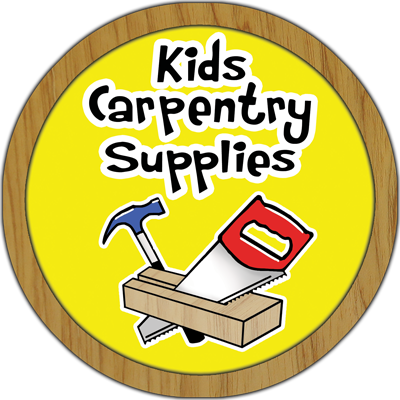Easter Bunny String Art
Looking for a fun, hands-on Easter carpentry project for kids?
This Easter Bunny String Art activity is a fantastic way to combine hammering skills with artistic expression.
Children will enjoy using real tools to create their own unique Easter bunny while building confidence with tools and developing fine motor skills, hand-eye coordination and focus.
This craft is perfect for classrooms, school holiday programmes or a fun project to keep kids busy at home over the holidays.
It’s easy to adapt for different ages and kids can experiment with various colours and patterns to make their bunny truly one-of-a-kind!
How to make your easter bunny string art:
1. Choose and Prep Your Wood: Start by selecting a flat piece of wood that's big enough to fit your bunny design. Using your sandpaper, sand off any rough edges and corners.
2. Prepare the Bunny Shape: Print out a simple outline of a bunny that fits your chosen piece of wood. For younger children, a basic shape works best, while older kids may enjoy more detailed designs. Alternatively, kids can draw their own bunny outline directly onto the wood.
3. Attach the Template: Position the paper bunny outline on the wood and secure it with tape or Blu Tack to keep it from shifting.
4. Hammer the Nails: Hammer nails evenly around the entire outline of the bunny. Keep the nails about 1cm apart. Be sure not to hammer the nails all the way in - you need some nail sticking out for the string to wrap around.
Don’t forget to add a small circle of nails for the bunny’s tail too!
5. Remove the Paper: Once all the nails are in place, carefully remove the paper template.
6. Start Weaving the String: Tie one end of the string or wool to any nail to begin. Then, start wrapping the string around the nails in a random or patterned way to fill in the bunny shape. There’s no right or wrong way to do this - get creative, kids!
7. Add the Tail: Use a different colour string or wool for the bunny’s tail to make it stand out. Wind and weave the string around the smaller circle of nails in the same way.
8. Secure the End: Once the pattern is complete, tie the loose end of the string securely to a nail to prevent unravelling. Trim any excess string.
9. Well Done!
Once you’ve finished, find a good spot to display your bunny or give it as a special Easter gift.
Learning Benefits of this Craft:
Fine Motor Skills: Hammering nails and weaving string helps strengthen hand muscles and improve coordination.
Creativity & Expression: Kids can experiment with different colors, patterns, and stringing techniques to make their bunny unique.
Focus & Problem-Solving: Measuring nail spacing, planning patterns, and working through mistakes help build concentration and resilience.
Mathematical Concepts: Kids explore shapes, symmetry, measurement, and spatial reasoning as they position nails and weave string.
Basic Carpentry Skills: Children get hands-on experience using real tools in a safe and structured way.
Freestyle Learning: Encourage kids to enjoy the process of creating, not just the final product. There’s no “wrong” way to do it, and experimenting with their design can be just as fun as completing it!
Lisa’s Top Tips
Older kids can incorporate math by measuring nail spacing, exploring symmetry, or trying advanced weaving techniques like zigzags or herringbone patterns.
They can also challenge themselves with more intricate designs and use finer materials like thread or wire.Younger kids can follow a printed pattern taped to the wood for guidance. Simple designs with clear outlines are easiest.
A hand drill can be used to create small starter holes for the nails, which makes it easier and more accurate to hammer them and prevents the wood from splitting.
Using larger nails with thicker string helps avoid tangles.Rubber bands are a great alternative to string for younger kids - they’re quick and easy to add or remove, letting kids experiment with creating new designs and patterns over and over again.
Looking for kids tools, safety gear or other carpentry accessories?




